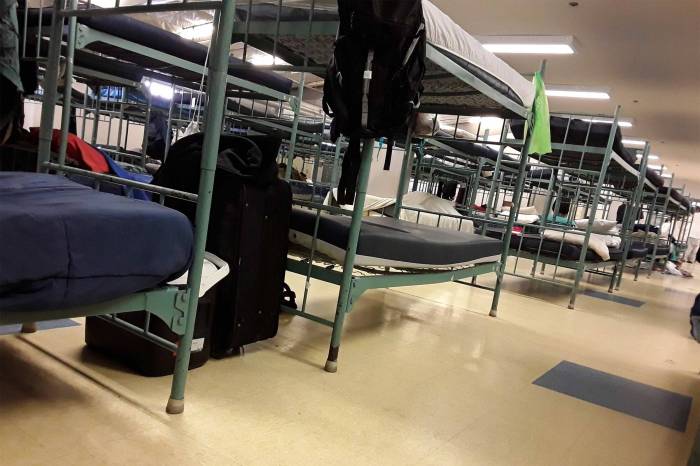Shelter the homeless corporal works of mercy – Shelter the homeless, a corporal work of mercy, has been a cornerstone of Christian tradition for centuries. This obligation, rooted in biblical teachings and theological principles, has shaped the development of shelters for the homeless across cultures and time periods.
As the issue of homelessness persists, the role of corporal works of mercy remains crucial in providing shelter and support to those in need.
Homelessness, a complex social issue, affects millions worldwide. Shelters provide essential services, including emergency shelter, transitional housing, and permanent supportive housing, tailored to the unique needs of individuals experiencing homelessness. These shelters not only offer a roof over one’s head but also provide access to healthcare, counseling, job training, and other support services.
1. Introduction to Sheltering the Homeless

Homelessness is a prevalent global issue affecting millions of individuals. It is characterized by a lack of stable, affordable housing, and access to basic necessities such as food, water, and sanitation. Sheltering the homeless is a crucial aspect of addressing this crisis, as it provides immediate protection from the elements, safety, and a sense of dignity.
The corporal works of mercy, as Artikeld in Catholic social teaching, call upon Christians to provide food, shelter, clothing, and other forms of assistance to those in need. Sheltering the homeless is a fundamental expression of these works, as it offers a tangible way to meet the basic human needs of those who have been marginalized and displaced.
2. Biblical and Theological Foundations

Biblical Passages
Numerous biblical passages emphasize the obligation to shelter the homeless. In the Old Testament, the book of Proverbs states, “He who oppresses the poor shows contempt for their Maker, but whoever is kind to the needy honors God” (Proverbs 14:31).
In the New Testament, Jesus himself instructs his followers to “give shelter to the homeless” (Matthew 25:35). This commandment is further reinforced in the parable of the Good Samaritan, where Jesus commends the Samaritan for providing care and shelter to a stranger in need (Luke 10:25-37).
Theological Principles
Theological principles underlying the obligation to care for the homeless include:
- The dignity of every human person, regardless of their circumstances.
- The preferential option for the poor and marginalized, who are often most vulnerable to homelessness.
- The call to social justice, which requires the creation of a society where all people have access to basic necessities.
3. Historical and Cultural Perspectives: Shelter The Homeless Corporal Works Of Mercy

Historical Development
The history of shelters for the homeless can be traced back to the early Christian era, when churches and monasteries provided refuge to the poor and homeless. In the Middle Ages, charitable organizations and guilds established hostels and shelters for the homeless.
During the Industrial Revolution, urbanization and poverty led to a surge in homelessness. In response, cities began to establish public shelters and soup kitchens.
Cultural Perspectives, Shelter the homeless corporal works of mercy
Approaches to sheltering the homeless vary across cultures and time periods. In some cultures, extended family networks provide shelter and support to those in need.
In other cultures, religious organizations or charitable institutions play a primary role in providing shelter and services to the homeless.
Query Resolution
What are the biblical foundations for sheltering the homeless?
The Bible contains numerous passages that call for providing shelter to those in need, such as Matthew 25:35-36, which instructs us to welcome the stranger and provide shelter for the homeless.
How have different cultures and time periods approached sheltering the homeless?
Shelters for the homeless have existed in various forms throughout history and across cultures. In the Middle Ages, monasteries and churches often provided shelter to the poor and homeless. In the 19th century, the Salvation Army and other organizations established shelters specifically designed to meet the needs of the homeless.
What are some of the challenges faced by homeless shelters?
Homeless shelters face numerous challenges, including funding, staffing shortages, and community resistance. Additionally, the needs of individuals experiencing homelessness are often complex and require specialized services, which can strain the resources of shelters.